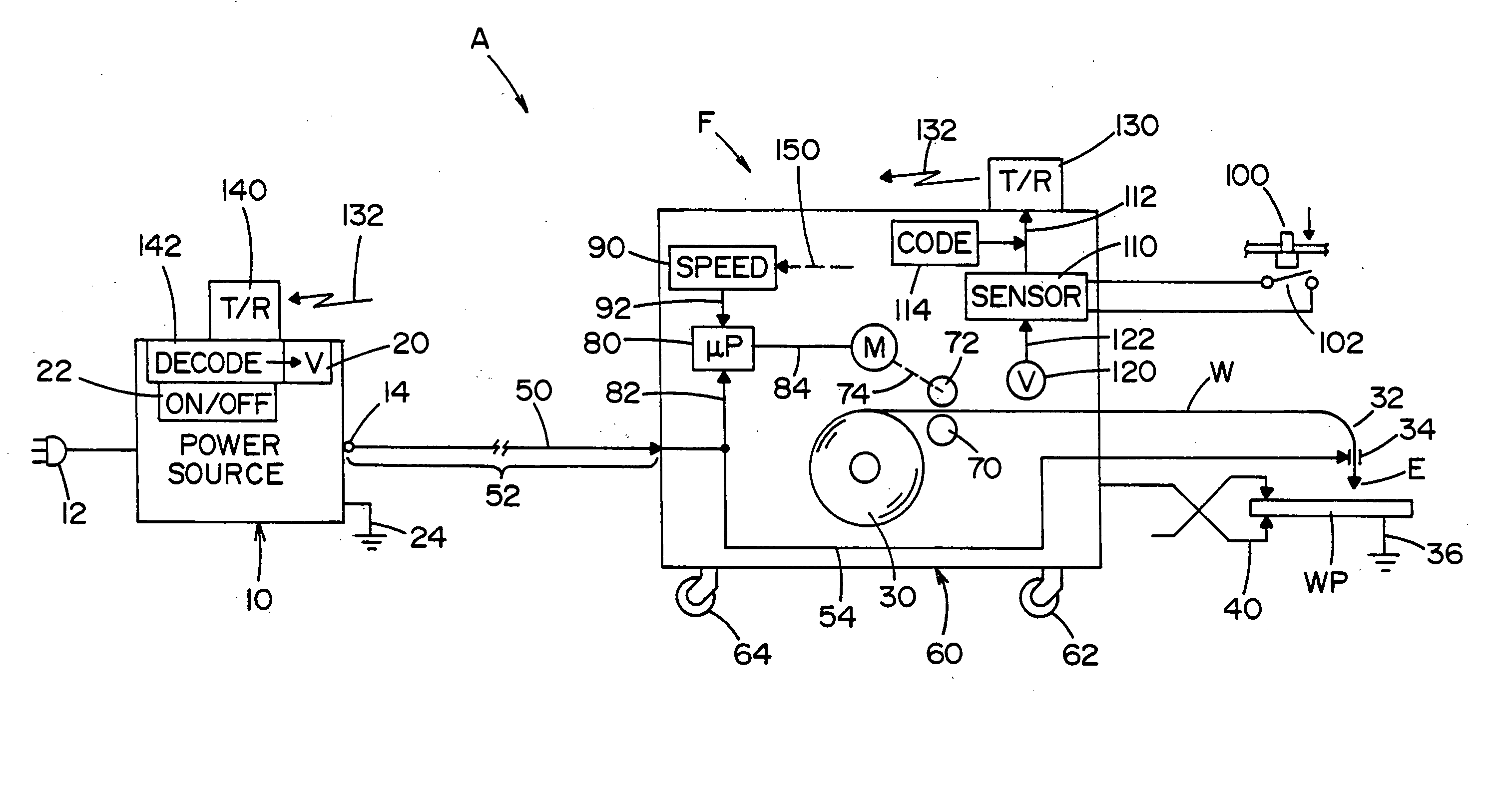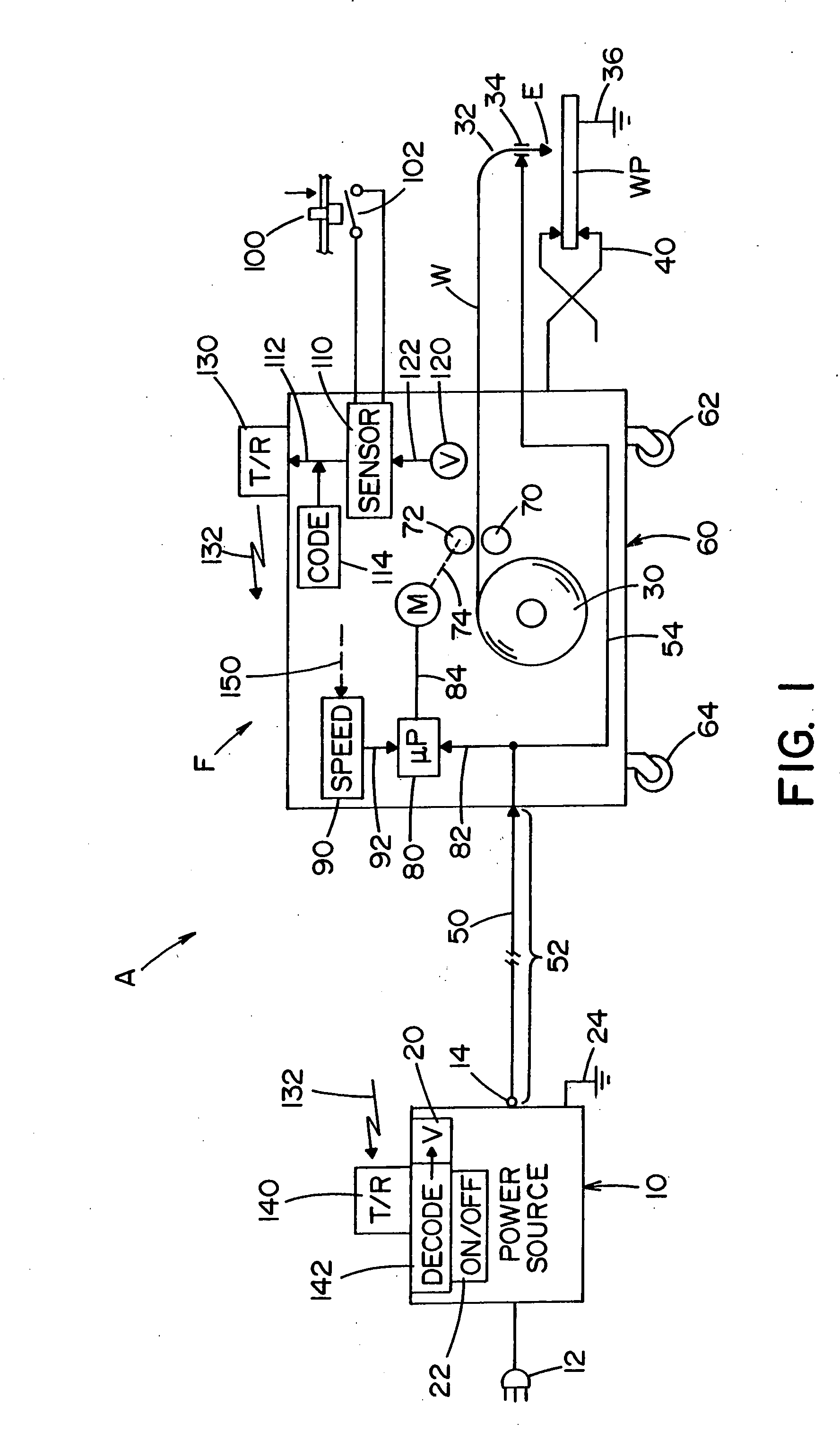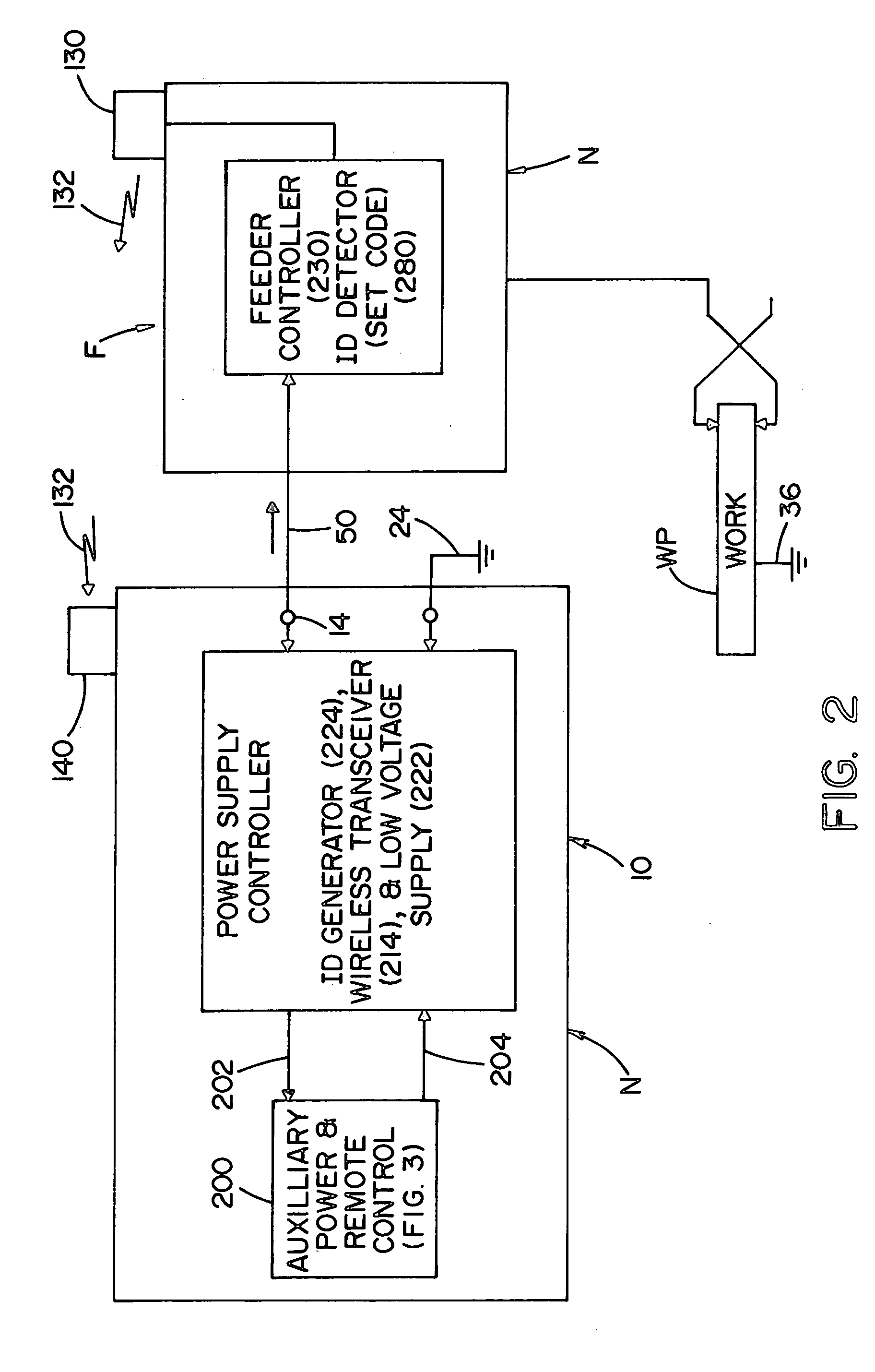Remote wire feeder
a feeder and wire technology, applied in the field of remote wire feeders, can solve the problems of prone failure of the internal mechanical contactor of the arc powered feeder, damage to the mechanical contactor of the feeder, and inability to accommodate repeated use of extremely high welding currents, etc., to achieve high current, high duty cycle, and high power cycle
- Summary
- Abstract
- Description
- Claims
- Application Information
AI Technical Summary
Benefits of technology
Problems solved by technology
Method used
Image
Examples
Embodiment Construction
[0020] Referring now to the drawings, FIG. 1 shows an electric arc welder A of the type including a generally fixed power source and having input 12 and output terminal or output 14 wherein the arc voltage is controlled by a circuit when the power supply is on at switch 22. In accordance with normal practice, power source 10 has ground 24. This power source is to be controlled by signals from wire feeder F to control the operation of the power source and to remove the need for an internal mechanical connector in the wire feeder. This later feature will be discussed first.
[0021] The invention involves a remotely located wire feeder F of the type including an internal spool 30 for electric arc welding wire W. The wire is pulled from spool 30 and pushed through gun or torch 32 to a contact sleeve 34. Electric power is directed to electrode E, which is wire W, for performing an electric arc welding process between the electrode and workpiece WP. Standard ground 36 is connected to the w...
PUM
| Property | Measurement | Unit |
|---|---|---|
| voltage | aaaaa | aaaaa |
| welding current | aaaaa | aaaaa |
| arc voltage | aaaaa | aaaaa |
Abstract
Description
Claims
Application Information
 Login to View More
Login to View More - R&D
- Intellectual Property
- Life Sciences
- Materials
- Tech Scout
- Unparalleled Data Quality
- Higher Quality Content
- 60% Fewer Hallucinations
Browse by: Latest US Patents, China's latest patents, Technical Efficacy Thesaurus, Application Domain, Technology Topic, Popular Technical Reports.
© 2025 PatSnap. All rights reserved.Legal|Privacy policy|Modern Slavery Act Transparency Statement|Sitemap|About US| Contact US: help@patsnap.com



